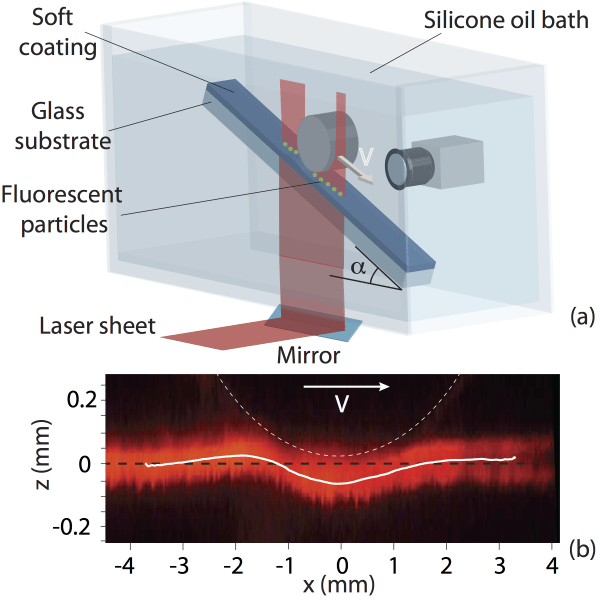Relative motion between soft wet solids arises in a number of applications in natural and artificial settings, and invariably couples elastic deformation and fluid flow. I explored this in a minimal setting by considering a fluid-immersed negatively-buoyant cylinder moving along a soft inclined wall. In those experiments I have shown that there is a self-emergent robust steady-state sliding regime of the cylinder as well as a steady state rotation regime with an effective friction that is significantly reduced relative to that of rigid fluid-lubricated contacts. A simple scaling approach that couples the cylinder-induced flow to substrate deformation allows us to explain the emergence of an elastohydrodynamic lift that underlies the self-sustained lubricated translation of the cylinder, consistent with recent theoretical predictions. The latter are not able to explain the steady state rotation observed experimentally. We developed a higher order theory based on the Lorentz reciprocal theorem that predicts a steady rolling of the cylinders.
This work suggest an explanation for a range of effects such as reduced wear in animal joints and long-runout landslides, and can be couched as a design principle for low-friction interfaces.

Self-sustained lift and low friction in soft lubrication. Baudouin Saintyves, T. Jules, T. Salez, L. Mahadevan. Proc. Natl. Acad. Sci. U.S.A (2016).
Rotation of an immersed cylinder sliding near a thin elastic coating. B. Rallabandi, Baudouin Saintyves, T. Jules, T. Salez, C. Schönecker, L. Mahadevan, and H.A. Stone. Physical Review Fluids (2017)
Rotation of a submerged finite cylinder moving down a soft incline. Baudouin Saintyves, B. Rallabandi, T. Jules, T. Salez, C. Schonecker, H. A. Stone and L. Mahadevan. Soft Matter (2020).
Une force de portance elastohydrodynamique en matiere molle. T. Salez, Baudouin Saintyves, Z. Zheng, V. Bertin, A. Maali. Reflets de la physique (2021).